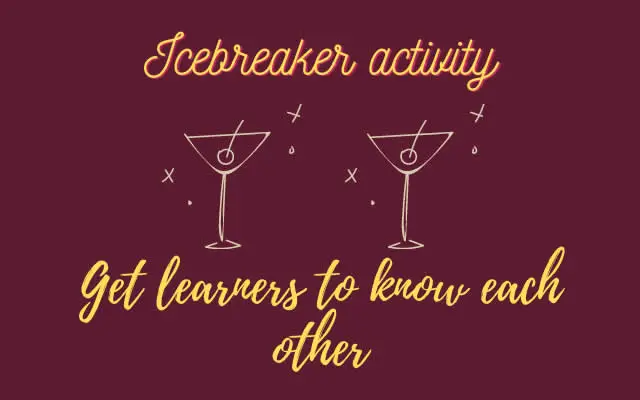Table of Contents
Icebreaker Activity: Breaking the Ice on the First Day
Starting a new class can be daunting for both students and teachers, especially in an EFL or ESL setting where language barriers might add to the anxiety.
This icebreaker activity is designed to alleviate first-day stress, create a welcoming atmosphere, and encourage students to interact and learn about one another in a fun and engaging way.
Adaptable for intermediate and advanced levels and suitable for all ages, this activity requires no materials and takes about fifteen minutes to complete. It not only makes the classroom more comfortable but also provides valuable opportunities for incidental learning.
Let’s first try to understand what icebreakers are!
What Are Icebreakers?
Icebreakers are activities or exercises designed to warm up the conversation and help participants get to know each other in a comfortable, low-pressure environment.
In a classroom setting, especially for EFL or ESL learners, icebreakers are essential for breaking down barriers, reducing anxiety, and encouraging interaction among students.
These activities typically involve fun and engaging tasks that promote communication, making students feel more at ease and setting a positive tone for the rest of the course.
Helping students connect early on using icebreakers can create a more cohesive and collaborative learning environment.
The Activity: Students Introduce Themselves
One of the most critical challenges for an EFL or ESL teacher on the first day is easing the tension that comes with meeting new people in a new environment. A great way to do this is through a self-introduction activity that encourages students to engage with one another in a relaxed, informal setting.

Step 1: Setting the Scene
Instead of asking students to simply introduce themselves with their names and some basic information—which can often be easily forgotten—place them in a relatable context. Tell them to imagine they are at a social event, like a party, where they need to get to know each other by asking questions. This approach not only makes the activity more dynamic but also helps students feel less pressured.
Step 2: Get Students Moving
After introducing yourself, explain the party scenario to the students. Encourage them to get up and move around the classroom. This physical movement helps reduce tension and makes the activity more lively and engaging.
Step 3: Preparing Questions
Before they begin mingling, ask each student to prepare five questions they would like to ask their classmates. These questions can vary depending on their proficiency level but might include queries about their name, age, nationality, and favorite things. This preparation step allows students to think critically about the information they want to learn and provides a purpose for their interactions.
Step 4: Mingling and Interaction
Give students time to ask at least three different classmates some of the questions they’ve prepared. This interaction helps students practice their language skills in a real-world context while also learning about their peers. It’s a great way to break down barriers and create a sense of community within the classroom.
Step 5: Sharing and Reflection
Once the mingling session is over, have everyone return to their seats. Ask each student to stand up and introduce themselves by sharing their name. Following each introduction, encourage other students to share what they’ve learned about that person based on the questions asked during the mingling. This not only reinforces memory but also helps students feel recognized and valued by their peers.
Conclusion
This icebreaker activity is a simple yet effective way to start the school year on a positive note. By creating a fun and relaxed environment, students are more likely to open up, interact, and form connections with their classmates.
The incidental learning that occurs through this activity—such as practicing speaking and listening skills—adds educational value while easing the transition into a new classroom setting.


